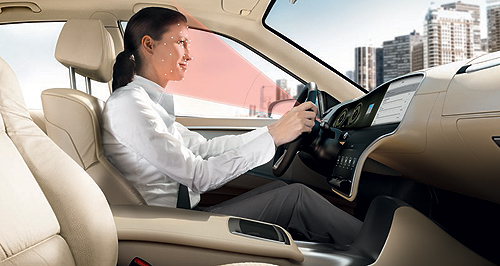News - ContinentalContinental details more automated techWake up: Continental’s new systems can detect when a driver is fatigued, using cameras to check the driver’s face. Cars will handle difficult parking situations in future with new Continental tech7 Jul 2017 By IAN PORTER in HANOVER THE handover of control between a vehicle and the driver is perhaps the critical stage on the path to automated driving and German parts giant Continental has come up with a system that may handle those awkward moments when the driver is not ready to take control. The company has also developed a parking system where an automated car can learn how to negotiate a winding driveway and reverse out again without human intervention. “We are looking at what happens if the driver does not react to a prompt from the automated car,” said Continental engineer Johannes Wolf. “It could be the end of the highway in a kilometre or two or, a theoretical one, something goes wrong in the car that is not supposed to happen,” he said while demonstrating the new system at the Continental TechShow in Hanover. “Whatever happens, the driver needs to be informed with a request to intervene. There could be flashing lights, sounds, it tells you please take over.” Continental has been working on a solution for when the driver is unresponsive. Called the Minimum Risk Manoeuvre, the automated car would be programmed to immediately find a safe space on the hard shoulder of the road where it can park until the driver is able to take control. The system takes into account the possibility that the hard shoulder may be blocked by another vehicle or an obstacle of some kind. “The car needs to detect obstacles,” Mr Wolf said. “The same as if there is an obstacle in front of you it needs to detect it, do an emergency brake. “If you want to do this lane change to the shoulder and there is a parked truck, there are different ways of handling it. You could just drive past and do the lane change or you could decide to stop in the lane if there is no shoulder beside it.”  Left: Continental engineer Johannes Wolf Continental’s approach to automated driving also includes constant driver monitoring so the system knows whether the driver is alert or drowsy, especially when the vehicle is in manual mode. Left: Continental engineer Johannes Wolf Continental’s approach to automated driving also includes constant driver monitoring so the system knows whether the driver is alert or drowsy, especially when the vehicle is in manual mode.The company has come up with a small camera equipped with infrared LEDs so it can also work at night. The camera is mounted on the steering column, with a clear view of the driver’s face. “The main functionalities for that camera with the head/eyetracker software is the attentiveness of the driver and then the drowsiness,” Mr Wolf said. “The system also includes driver presence – is there a driver sitting on the seat?” Once in place, the camera’s head/eye-tracker software can be used for other functions, Mr Wolf said. “Other features which are thinkable are face recognition. So you if enter the car and it recognises you, it might say ‘Hello Johannes’ and then it adjusts the seat to your position and all that stuff.” Equally, it could immobilise the vehicle if it does recognise the person behind the wheel. Once car and driver arrive home, another software program can take over to negotiate a winding driveway. Instead of just being able to parallel park, a car with this new Continental software would be able to learn a tricky driveway that winds around the house, and then be able to negotiate the route in reverse. “Upon request, the new Trained Parking function records and stores the sequence of a parking procedure,” said Alfred Eckert, head of advanced technology in Continental’s chassis and safety division. “When the procedure is to be repeated, the driver drives the vehicle near where the recording began and, at the touch of a button, the vehicle independently performs the previously learned parking procedure.” Mr Eckert said the Trained Parking function would use the sensors already on the car to produce a 360-degree map of where the parking happens. Later, it can recognise the location and automatically drive the learned route. It allows the driver to exit the vehicle before parking, which can be handy in tight parking spots. The first version of the Trained Parking system, which will be unveiled at September’s Frankfurt motor show, will be partially automated and will require driver supervision in the form of a dead man’s switch. The driver will have to hold down a button on a key or mobile phone while the vehicle automatically parks itself. A later version of the system will be fully automated, requiring no supervision. The system will be able to detect unexpected objects like rubbish bins not in the correct place and drive around them if there is room. It will also be able to detect children and come to a complete stop until the surroundings are free of obstacles, at which time it will complete the parking manoeuvre.  Read more4th of July 2017  Continental comes clean on car sensorsDirty sensors that can send autonomous vehicles blind get Continental clean-up3rd of July 2017  Continental enhances ambient lightingLED-embedded interior surfaces from Continental can be used to warn drivers27th of June 2017  Continental’s mild-hybrid tech cuts CO2 emissionsDiesel more viable with Continental's new catalytic converter and mild-hybrid system |
Click to shareContinental articlesMotor industry news |
















Facebook Twitter Instagram